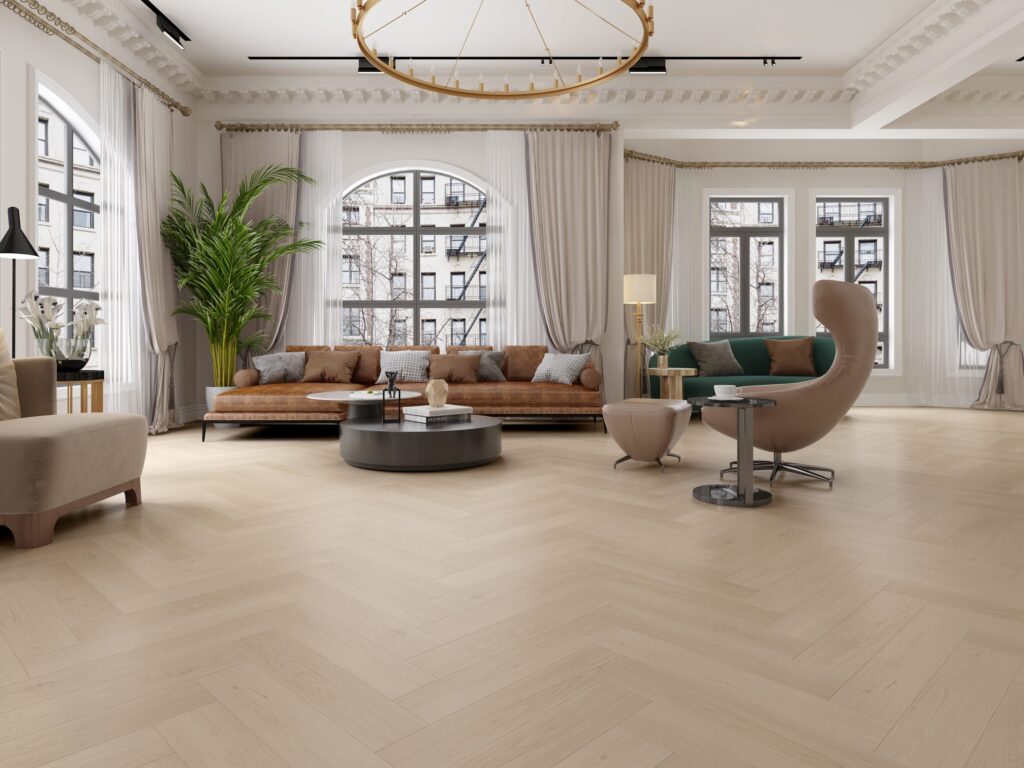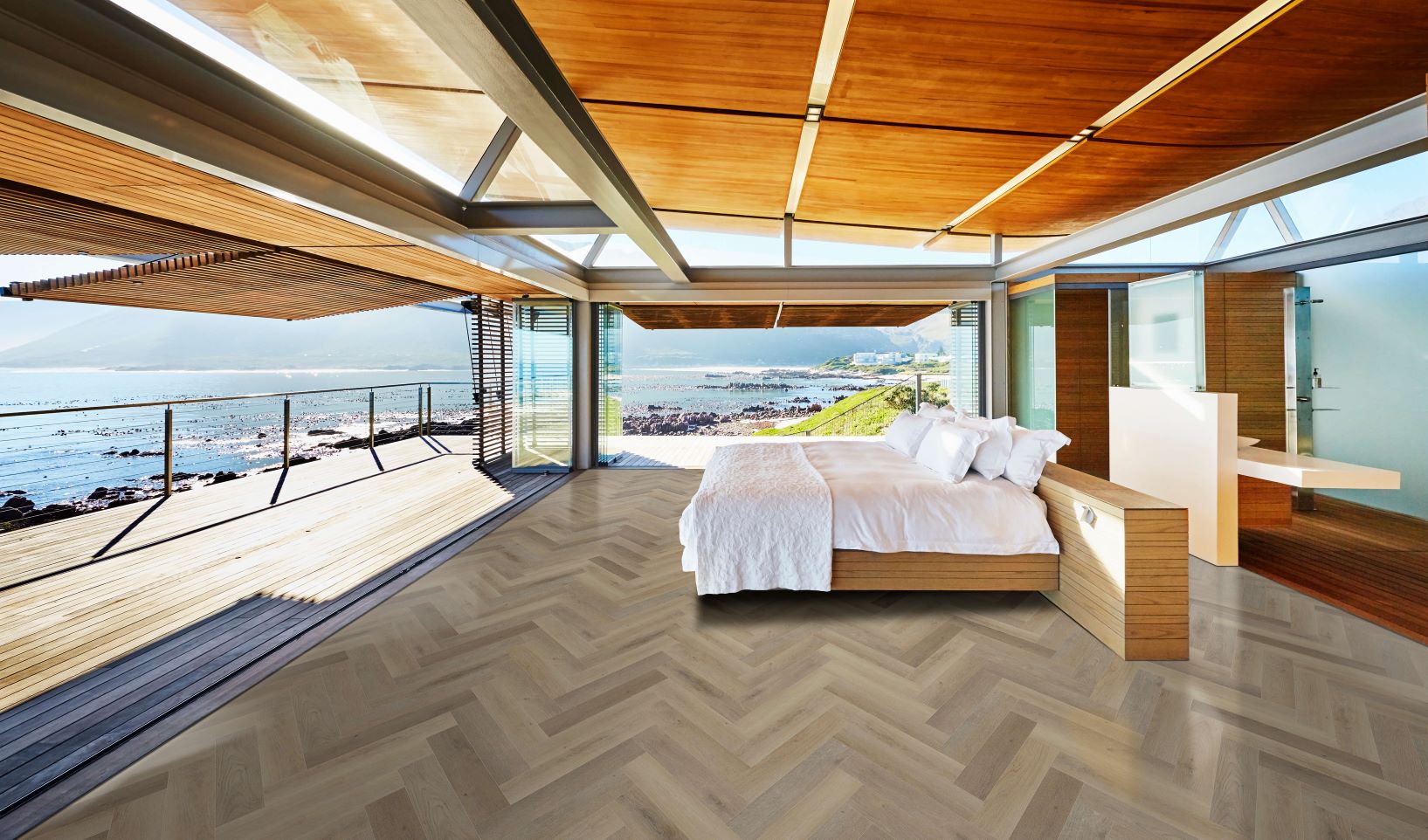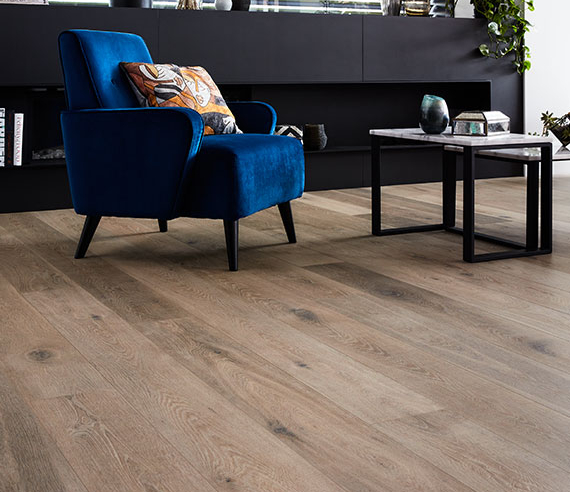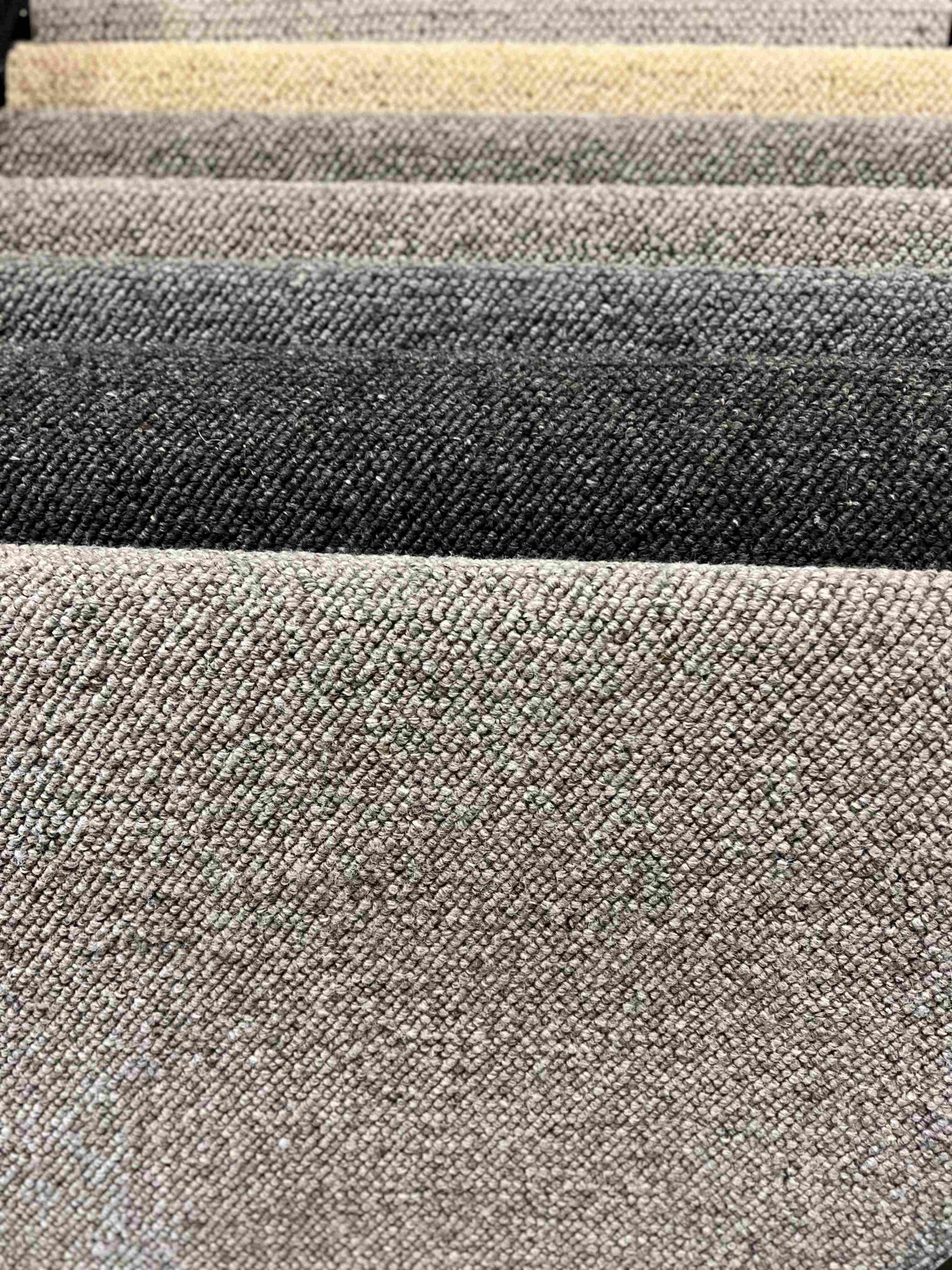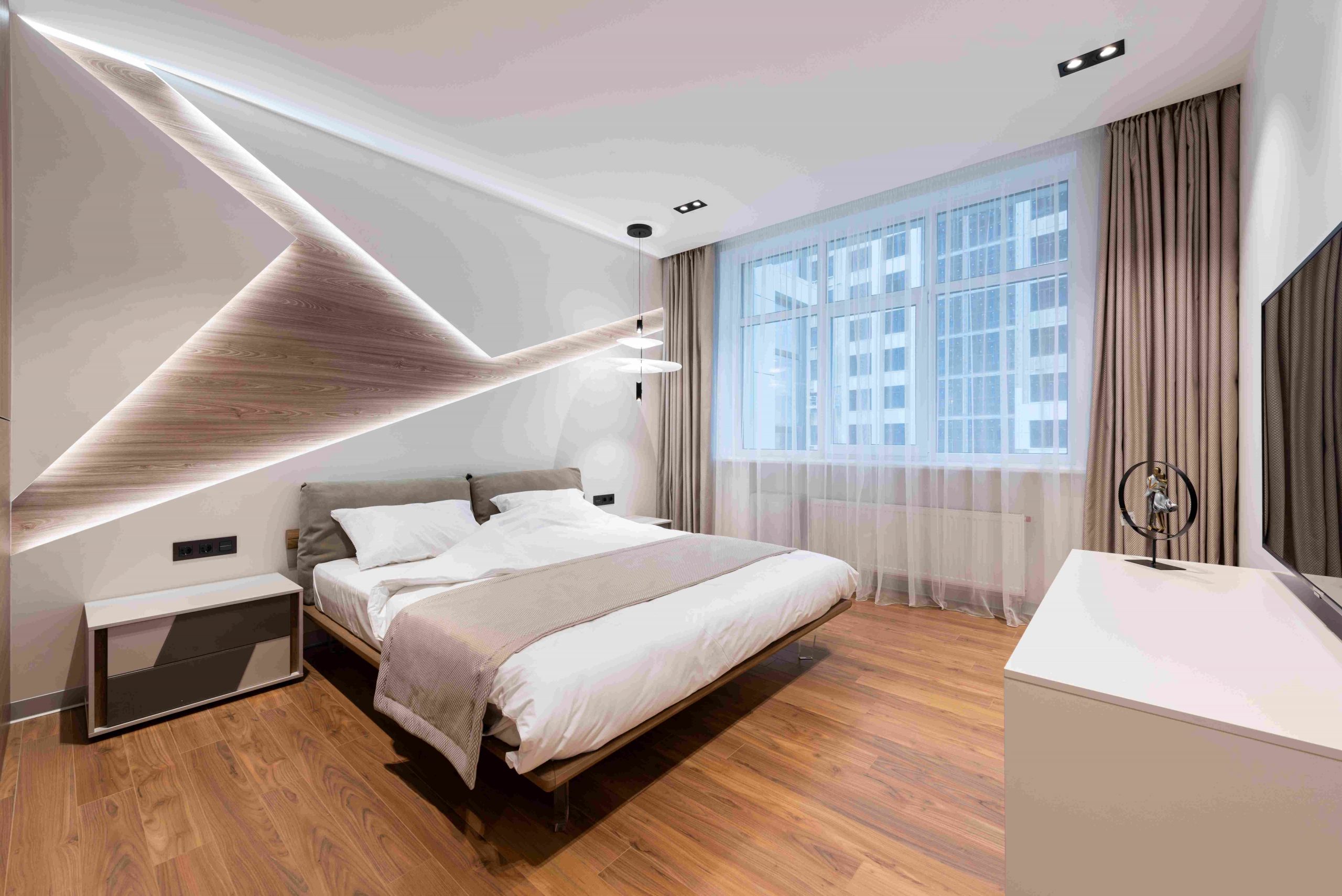herringbone and chevron engineered timber
Investing in herringbone or parquetry timber floors can significantly enhance the aesthetic appeal of your property. These flooring options offer a unique and classic look that can increase the value of your home or office space. However, as with any investment, it is crucial to ensure that you take care of your floors properly to protect your investment.
Proper cleaning and maintenance are essential to keep your herringbone or parquetry timber floors looking their best. Avoiding abrasive or acidic cleaners, using furniture pads, and regular sweeping or vacuuming can help maintain the surface of your floors. Additionally, professional cleaning and refinishing every few years can help extend the lifespan of your floors and keep them looking new.
By following these care and maintenance tips, you can enjoy the full benefits of your investment in herringbone or parquetry timber floors. Consulting with a professional flooring contractor can also ensure that your floors are installed and maintained correctly, so you can enjoy a beautiful and sophisticated flooring option in your home or office for years to come.
Herringbone and chevron are two popular patterns in engineered timber flooring that can add a touch of elegance and sophistication to any interior space. While both patterns feature a series of diagonal lines, there are subtle differences that set them apart.
Herringbone pattern features planks that are cut at a 90-degree angle and arranged in a zigzag pattern, creating a “V” shape. This pattern has been used for centuries in classic parquet flooring and is known for its timeless appeal. Chevron pattern, on the other hand, features planks that are cut at a 45-degree angle and arranged in a continuous zigzag pattern, creating a seamless, arrow-like effect. This pattern is a more modern take on the classic herringbone, offering a bolder and more dramatic look.
What type of timber is commonly used for herringbone timber floors?
Herringbone timber floors are a popular option for homeowners who desire a classic and elegant aesthetic. This type of flooring is characterised by its distinctive V-shaped pattern, which creates a sense of depth and texture in any space.
When it comes to selecting the right timber for herringbone flooring, there are a few key factors to consider. Firstly, the timber needs to be durable and resistant to wear and tear, as well as moisture and temperature fluctuations. Secondly, it should have a consistent grain pattern and colour, as this will help to enhance the visual impact of the herringbone pattern.
One of the most commonly used timbers for herringbone flooring is oak. Oak is a hardwood that is renowned for its strength, durability, and timeless beauty. It has a distinctive grain pattern that adds character and texture to the flooring, and its natural hues range from light tan to rich brown.
Another popular option for herringbone flooring is walnut. Walnut is a dark, rich hardwood that adds warmth and depth to any space. It has a straight grain pattern that complements the herringbone pattern, and its luxurious appearance makes it a favourite among designers and homeowners alike.
Other timbers that can be used for herringbone flooring include maple, cherry, and mahogany. Each of these timbers has its own unique characteristics and can be selected based on personal preference and the design aesthetic of the space.
Ultimately, the type of timber used for herringbone flooring will depend on a range of factors, including budget, durability, and design preference. It is important to work with a trusted and experienced flooring supplier to select the right timber for your project and to ensure that the installation is carried out to the highest standards.
When it comes to chevron engineered timber, what are some of the benefits of this pattern?
Chevron engineered timber is a modern and stylish option that offers a range of benefits over traditional hardwood flooring. Firstly, engineered timber is more stable than solid hardwood, making it less prone to warping and buckling. This is because it is made up of multiple layers of wood that are bonded together, providing greater strength and durability. Additionally, the top layer of engineered timber can be made from a wide range of hardwoods, allowing for greater design flexibility and customisation.
In terms of the chevron pattern specifically, this offers a number of benefits for interior design. Its continuous zigzag pattern creates the illusion of length and space, making it ideal for smaller rooms or narrow hallways. It also adds a sense of movement and energy to any space, creating a dynamic and engaging atmosphere. Finally, the chevron pattern can be laid in a variety of directions, allowing for greater creativity and experimentation in design. This makes it a popular choice for modern and contemporary interiors that are looking to push the boundaries of traditional flooring design.
What are the advantages of a herringbone timber floor?
Herringbone timber flooring is a popular choice for homeowners and interior designers alike, and for good reason. Not only does it add a touch of timeless elegance to any space, but it also comes with a host of practical benefits. In this blog post, we’ll take a closer look at the advantages of a herringbone timber floor.
1. Durability: Timber flooring is known for its durability and strength, and herringbone flooring is no exception. When installed correctly, herringbone flooring can last for several decades, making it a smart investment for any homeowner.
2. Timeless appeal: Herringbone timber floors have been around for centuries and are still a popular choice today. This classic pattern never goes out of style, making it a timeless addition to any home.
3. Versatility: Herringbone timber flooring is versatile and can be used in a range of interior styles, from traditional to contemporary. This makes it easy to incorporate into any design scheme.
4. Easy to maintain: Timber floors are relatively easy to maintain, and herringbone flooring is no exception. Regular sweeping and occasional mopping is all that’s needed to keep it looking its best.
5. Adds value: Herringbone timber flooring is a desirable feature in any home and can add value to your property. If you’re considering selling your home in the future, a herringbone timber floor can make it more attractive to potential buyers.
In conclusion, herringbone timber flooring is a smart choicefor any homeowner or interior designer looking for a practical and stylish flooring option. Its durability, timeless appeal, versatility, easy maintenance, and added value make it a wise investment in any home. Plus, with a variety of timber options and finishes available, herringbone timber flooring can be customized to suit any design scheme. So if you’re considering a new flooring option, be sure to consider the advantages of herringbone timber flooring.
How do you install a herringbone timber floor?
Installing a herringbone timber floor can be a challenging yet rewarding project that can add elegance and character to any space. The following steps will guide you through the installation process and ensure a stunning result.
Step 1: Plan and Prepare
Before beginning the installation process, it’s important to plan and prepare the space. Measure the area to determine the amount of timber required, including an additional 10% for wastage. Check the subfloor for any damage or unevenness and repair it if necessary. Make sure the surface is clean and dry before beginning.
Step 2: Lay the Foundation
To ensure a stable and long-lasting floor, it’s necessary to lay a foundation. Begin by laying a moisture barrier over the subfloor to prevent moisture from penetrating the timber. Next, install a layer of plywood or MDF to create a level base for the herringbone pattern.
Step 3: Lay the First Row
Starting from the center of the room, lay the first row of timber at a 45-degree angle to the wall. Use a chalk line to ensure a straight line and cut the boards to size with a saw. Secure each board to the subfloor with adhesive and nails.
Step 4: Create the Herringbone Pattern
Continue laying the timber in a herringbone pattern, working outwards from the center. Use a bevel square to create the perfect angle and ensure a tight fit between each board. Cut the boards to size as needed and secure them to the subfloor with adhesive and nails.
Step 5: Sand and Finish
Once the herringbone pattern is complete, sand the surface to create a smooth finish. Apply a protective finish of your choice, such as oil or lacquer, to enhance the durability and natural beauty of the timber.
In summary, installing a herringbone timber floor requires careful planning and preparation, as well as attention to detail during the installation process. However, the result is a stunning and timeless flooring option that adds value and elegance to any space. Be sure to consult with a professional installer or do thorough research before taking on this project to ensure the best possible outcome.
Are herringbone timber floors expensive?
Herringbone timber floors are undoubtedly one of the most elegant and timeless flooring options available in the market. The herringbone pattern, created by laying rectangular wood pieces at a 90-degree angle to each other, adds a unique charm to any space.
When it comes to the cost of herringbone timber floors, several factors come into play. The price may vary based on the type of wood used, the thickness of the wood, the size of the planks, and the complexity of the installation.
Generally, herringbone timber floors are more expensive than other flooring options due to the intricate pattern and the skilled labor required for installation. The cost may also depend on the quality of the wood used, with more luxurious timber varieties costing more.
However, it’s important to note that investing in herringbone timber floors can add significant value and appeal to your property. A well-maintained herringbone timber floor can last for generations, making it a wise long-term investment.
In conclusion, while herringbone timber floors may be more expensive than other flooring options, the unique visual appeal and longevity they offer make them a worthwhile investment for any homeowner or property owner. It’s always best to consult with a professional flooring contractor to determine the exact cost based on your specific needs and preferences.
What is the best type of finish to use on a herringbone timber floor?
When it comes to finishing herringbone timber floors, there are a variety of options to choose from, each with their own advantages and disadvantages. Ultimately, the best type of finish for your herringbone timber floor will depend on your individual needs and preferences. In this article, we will explore the most common types of finishes used on herringbone timber floors, and their benefits.
1. Oil-based finishes: These finishes are popular for their durability and ability to highlight the natural beauty of timber. Oil-based finishes penetrate deeply into the timber and provide a warm, rich, and natural look. They are easy to maintain, and can be recoated without sanding in most cases. However, they can take a long time to dry and can emit strong fumes during application.
2. Water-based finishes: These finishes are popular for their fast drying time, low VOC emissions, and ease of application. They provide a clear, natural look while still offering good durability. They also offer excellent scratch resistance and can be recoated without sanding in most cases. However, they may not penetrate deeply into the timber and can be more difficult to apply than oil-based finishes.
3. Polyurethane finishes: These finishes offer excellent durability and are resistant to scratches, stains, and other damage. They are available in both oil-based and water-based formulas and provide a clear, glossy finish. However, they can be difficult to apply and may require multiple coats. They can also be more expensive than other types of finishes.
Ultimately, the best finish for your herringbone timber floor will depend on your specific needs and preferences. Consider factors such as the level of durability you require, the desired look and feel of the finish, and the level of maintenance you’re willing to undertake. Additionally, it’s important to ensure that the finish you choose is compatible with the species of timber used for your floor, as some finishes may not adhere well to certain types of timber.
In summary, herringbone timber floors are a stunning addition to any home or property, and choosing the right finish is an important step in ensuring their longevity and beauty. By considering the advantages and disadvantages of various finish types, and consulting with a professional flooring contractor, you can make an informed decision about which finish will best suit your needs and preferences. With the right care and maintenance, your herringbone timber floor will continue to provide a timeless and elegant look for generations to come.
Are herringbone timber floors difficult to clean?
Herringbone timber floors are a timeless and elegant flooring choice that can add a touch of sophistication to any space. However, many people are hesitant to install herringbone timber floors because they believe that they are difficult to clean. In reality, herringbone timber floors are not any more difficult to clean than other types of hardwood flooring, but they do require some extra care and attention to detail.
One of the most important things to keep in mind when cleaning herringbone timber floors is to avoid using abrasive or acidic cleaning products, as these can damage the surface of the wood. Instead, it is best to use a gentle, pH-neutral cleaner specifically designed for hardwood floors. You should also avoid using excessive amounts of water, which can seep into the cracks between the herringbone planks and cause warping or other damage.
In addition, it is important to sweep or vacuum herringbone timber floors regularly to remove dirt, dust, and other debris that can scratch or damage the surface of the wood. You should also use furniture pads or felt protectors on the legs of your furniture to prevent scratches and dents.
Finally, it is a good idea to have your herringbone timber floors professionally cleaned and refinished every few years to keep them looking their best. This will help to remove any stains, scratches, or other damage that may have accumulated over time, and will give your floors a fresh, new look.
In conclusion, while herringbone timber floors do require some extra care and maintenance, they are not any more difficult to clean than other types of hardwood flooring. By following some simple cleaning and maintenance tips, you can keep your herringbone timber floors looking beautiful and elegant for years to come. As with any investment, it’s important to consult with a professional flooring contractor to ensure that your floors are installed and maintained properly, so that you can enjoy the full benefits of this timeless and sophisticated flooring option.
parquetry timber floor is another popular choice for those who want to add a touch of elegance to their home or office. Parquetry timber floors are made up of small individual pieces of timber arranged in intricate patterns, such as herringbone or chevron.
What is Parquetry Timber floor
Like herringbone timber floors, parquetry timber floors require some extra care and attention to detail when it comes to cleaning and maintenance. It is important to avoid using abrasive or acidic cleaning products, and to use a gentle, pH-neutral cleaner designed specifically for hardwood floors. Excessive water should also be avoided, as it can seep into the crevices between the individual timber pieces and cause warping or other damage.
Regular sweeping or vacuuming is also necessary to remove dirt and debris that can scratch or damage the surface of the timber. Furniture pads or felt protectors should also be used on the legs of furniture to prevent scratches and dents.
In addition, it is important to have your parquetry timber floors professionally cleaned and refinished every few years to keep them looking their best. This will help to remove any stains or damage that may have accumulated over time, and will give your floors a fresh, new look.
In conclusion, both herringbone and parquetry timber floors are elegant and timeless flooring choices that can add a touch of sophistication to any space. By following some simple cleaning and maintenance tips, you can keep your floors looking beautiful and elegant for years to come. Consult with a professional flooring contractor for installation and maintenance advice.
With proper care and maintenance, herringbone and parquetry timber floors can last for decades, making them a worthwhile investment for any home or office. Remember to avoid using harsh cleaning products, excessive water, and to regularly sweep or vacuum to prevent scratches and damage. And when it comes time for a deeper clean or refinishing, always consult with a professional to ensure the best possible results. By taking these steps, you can keep your floors looking as elegant and refined as the day they were installed.
Herringbone timber and parquetry timber floors that are carefully crafted with attention to detail and quality. Our experienced flooring contractors can provide expert advice on installation and maintenance, ensuring that your floors are installed and maintained properly for long-lasting beauty and durability.
At Melbourne Carpet Flooring (mcf) stores, we are dedicated to providing our customers with exceptional service and high-quality products. Contact us today to learn more about our herringbone and parquetry timber floors, and how we can help you achieve the elegant and sophisticated look you desire in your home or office.

